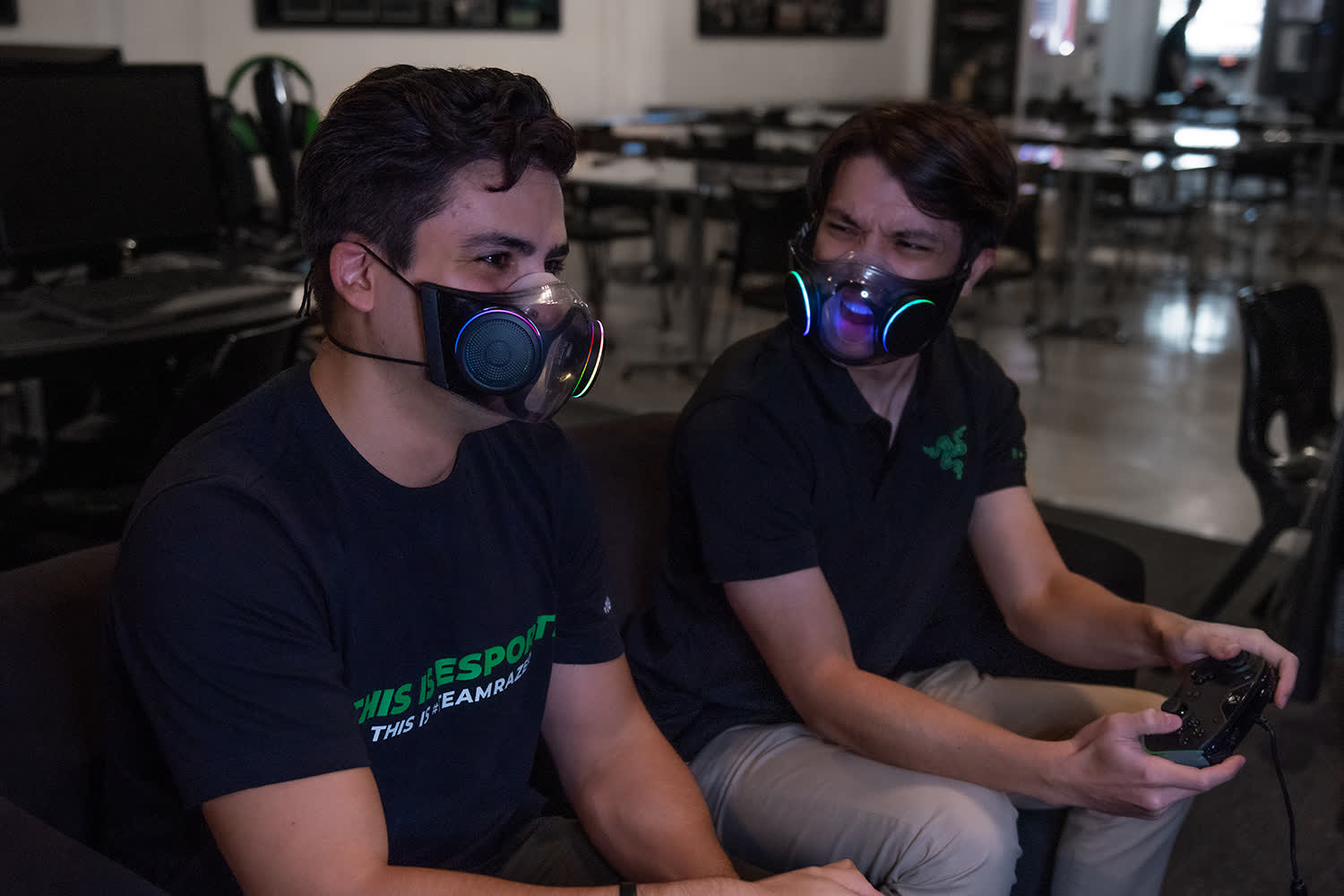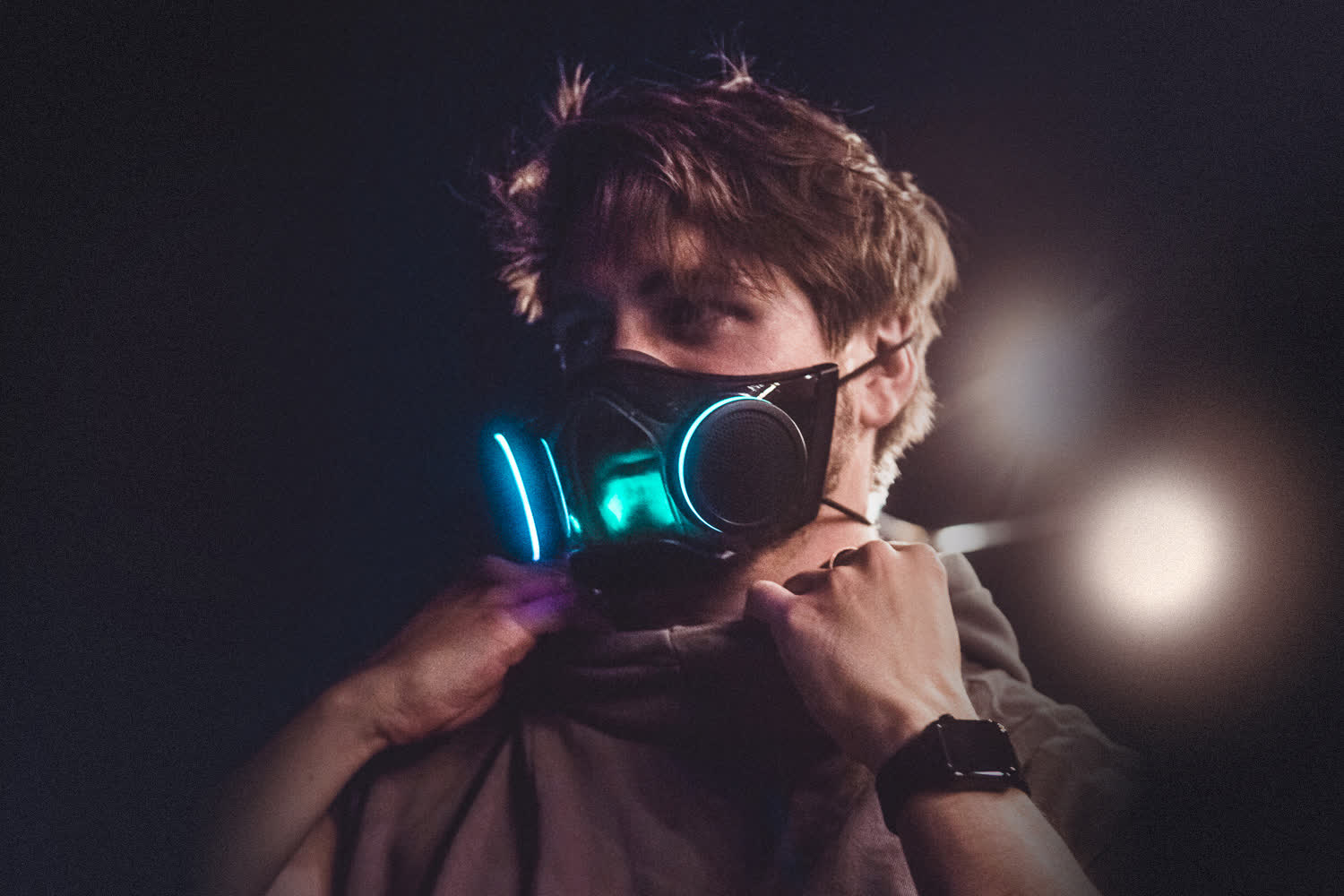Highly anticipated: If you've ever wished that your face looked like a gaming PC's transparent side panel, today's your chance to make that happen. Sign up for the only face mask to ever need a public beta test, today.
At CES, Razer displayed an RGB-infused N95 face mask that garnered enough attention to compel them to turn it into a real product. It was called Project Hazel at the time, but it's now the Razer Zephyr.
A zephyr is a westerly wind or a gentle breeze, which is what you'll feel inside the mask thanks to its active ventilation that whisks heat away. That's one of a few little features that Razer included to make you feel like you're inside a gaming PC.
Another is the overwhelming amount of RGB. It has two large RGB rings with addressable zones that surround the filters and spill light onto your face, illuminating your mouth through the triangular window. The RGB is compatible with Razer Chroma, so you can sync it up to your keyboard or PC's lightshow.
Zephyr, compared to the concept renders of Hazel, is a bit larger. The mask now has a Darth Vader-style grill below the mouth, which presumably houses the microphone and speaker. Allegedly they're to help you speak clearly through the mask, but I'd much rather modify them to make myself sound like Vader. (Make it a feature, Razer.)
Zephyr also has a silicon guard that creates an airtight seal between your face and the mask, which should prevent it from fogging up your glasses (the window inside the mask has an anti-fog coating). Project Hazel's ear loops were replaced with adjustable straps that wrap around your head, a bit like a VR headset's.
For important health purposes the Zephyr has replaceable N95 filters, and ventilators that need recharging once a day. It comes with a wireless charging case with sterilizing UV lights inside.

If you're interested, Razer's public beta test of the Zephyr is global and free, although by signing up you're agreeing to allow Razer to use photos of you wearing the mask for promotional purposes. You'll probably save a few hundred dollars by picking one up in the test instead of buying one when they hit the market sometime in Q4.
